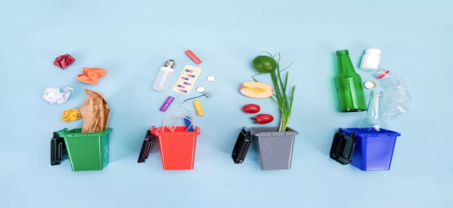
“What kind of rubbish are you?” This question might normally cause anger, but in Shanghai it has brought about complaints over the past week. On July 1st, the city introduced strict trash-sorting regulations that are expected to be used as a model for our country. Residents must divide their waste into four separate kinds and put it into specific public bins. They must do so at scheduled times, when monitors are present to ensure compliance(服从)and to inquire into the nature of one’s rubbish.
Violators face the possibility of fines and worse. They could be hit with fines of up to 200 yuan ($29). For repeat violators, the city can add black marks to their credit records, making it harder for them to obtain bank loans or even buy train tickets.
Shanghai authorities are responding to an obvious environmental problem. It generates 9 million tonnes of garbage a year, more than London’s annual output and rising quickly. But like other cities in China, it lacks a recycling system. Instead, it has relied on trash pickers to sort out the waste, picking out whatever can be reused. This has limits. As people get wealthier, fewer of them want to do such dirty work. The waste, meanwhile, just keeps piling up. China produces 80 billion pairs of disposable(一次性的)chopsticks a year.
Many residents appear to support the idea of recycling in general but are frustrated by the details. Rubbish must be divided according to whether it is food, recyclable, dry or hazardous(有害的), the differences among which can be confusing, though there are apps to help work it out. Some have complained about the rules surrounding food waste. They must put it straight in the required public bin, forcing them to tear open plastic bags and toss it by hand. Most upset are the short windows for throwing trash, typically a couple of hours, morning and evening. Along with the monitors at the bins, this means that people go at around the same time and can keep an eye on what is being thrown out; no one wants to look bad.
【小题1】What does the underlined word “Violators” in Paragraph 2 refer to?| A.People who don’t sort the waste. |
| B.People who argue with the monitors. |
| C.People who don’t throw the trash on time. |
| D.People who are against the regulations. |
| A.The massive traffic. | B.The increasing garbage. |
| C.Lack of a recycling system. | D.Lack of trash pickers. |
| A.Complex distinction among the four categories of trash. |
| B.Short scheduled time for throwing the trash. |
| C.Being observed by monitors when throwing the garbage. |
| D.Being fined when blamed due to improper behavior. |
| A.A Restart of Trash-sorting | B.A Great Change in Tackling Litter |
| C.New Times of Garbage Classification | D.A Craze for Learning Waste Sorting |


